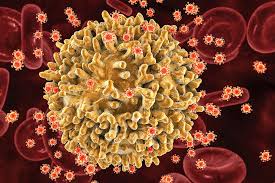The Delta 32 Mutation: The Genetic Anomaly That Defies HIV
SCIENCE
Sahil Sharma
10/22/20232 min read


In the realm of genetics, there are anomalies that have the power to captivate our imagination, challenge scientific understanding, and, in some cases, even save lives. The Delta 32 mutation is one such anomaly, a rare genetic variation that confers remarkable resistance to HIV, the virus that causes AIDS. In this blog post, we will delve into the intriguing world of the Delta 32 mutation, exploring its history, implications, and the ongoing research surrounding it.
Unraveling the Mystery
The Delta 32 mutation, also known as CCR5-Δ32, was first discovered in the 1990s when scientists were seeking to understand why some individuals appeared to be resistant to HIV infection, despite being exposed to the virus. This genetic variation is a deletion of 32 base pairs in the CCR5 gene, a receptor found on the surface of white blood cells. CCR5 is crucial for HIV to enter and infect these immune cells, and the Delta 32 mutation disrupts this process.
The Impact of Delta 32 on HIV Resistance
Individuals who inherit two copies of the Delta 32 mutation (homozygous) are highly resistant to HIV infection. Their immune cells lack the CCR5 receptor, making it extremely difficult for the virus to enter and replicate within their bodies. Those with one copy of the mutation (heterozygous) have a reduced risk of infection and often progress more slowly to AIDS if infected.
This extraordinary resistance to HIV has not only piqued scientific curiosity but also paved the way for groundbreaking research and medical developments.
The Berlin Patient: A Living Legend
One of the most famous cases illustrating the power of the Delta 32 mutation is that of Timothy Ray Brown, known as the "Berlin Patient." In 2007, Timothy became the first person to be cured of HIV. He received a stem cell transplant from a donor with two copies of the Delta 32 mutation as a treatment for his leukemia. Not only was his leukemia cured, but the absence of CCR5 receptors in the donor's stem cells made Timothy resistant to HIV. He remains a symbol of hope and an extraordinary testament to the possibilities that lie within our genetic code.
Research and Implications
The discovery of the Delta 32 mutation has fueled ongoing research in the field of HIV and genetics. Scientists are now exploring the potential for gene editing and stem cell transplantation to replicate the success of the Berlin Patient in a broader context. This research offers hope for individuals living with HIV and opens doors to new treatment possibilities.
Moreover, the Delta 32 mutation highlights the intricate relationship between genetics, immunity, and disease. It raises questions about the evolution of such genetic variations and the factors that contribute to their rarity.
Conclusion
The Delta 32 mutation is a remarkable example of how genetics can play a pivotal role in the battle against deadly diseases. It represents a ray of hope for those affected by HIV and continues to inspire groundbreaking research in the fields of gene therapy and HIV treatment.
As our understanding of genetics deepens, the Delta 32 mutation serves as a testament to the incredible complexity and adaptability of our genetic code. It reminds us that, within our DNA, there may be answers to some of the most pressing health challenges humanity faces, and the story of Delta 32 is far from over.
